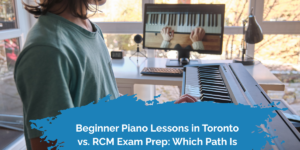Elite Music Academy is a music school and guitar shop in Toronto providing guitar lessons with several distinguished and unique guitar teachers. Want to learn more about our programs and guitar lessons? Click here to get started!
 If you want to become a great guitarist, you need more than the simple desire to learn guitar. Becoming a great guitarist certainly starts with the passion and the desire, but it requires a serious time commitment as well. Taking guitar lessons with a qualified guitar teacher is the first step to take. However, guitar lessons and a guitar teacher, no matter how good and inspiring, won’t turn you into a great guitarist either. The only way to get there is through years of dedicated practice. In other words, you have to really want it and work hard for it.
If you want to become a great guitarist, you need more than the simple desire to learn guitar. Becoming a great guitarist certainly starts with the passion and the desire, but it requires a serious time commitment as well. Taking guitar lessons with a qualified guitar teacher is the first step to take. However, guitar lessons and a guitar teacher, no matter how good and inspiring, won’t turn you into a great guitarist either. The only way to get there is through years of dedicated practice. In other words, you have to really want it and work hard for it.
Practice Schedule
The most efficient and effective way to make progress on the guitar is to designate time to practice the guitar several times a week for at least 30 to 60 minutes. If this is not possible, then the student should practice at least three to four days a week for at least 60 minutes. At first maintaining a regular schedule may be a struggle but, if you are diligent, it eventually becomes more of a habit.
Practice versus Playing
A common mistake that many guitar players make, and not just beginners, is thinking that practicing the guitar is same thing as playing the guitar. Playing the guitar and jamming with friends certainly has its benefits but it has its limitations as well. The time set aside for practicing should be used to work on technique, expanding your understanding of the guitar and music, and generally increasing your dexterity on the instrument. Playing the guitar, on the other hand, especially at a gig, focuses on creativity and spontaneity. The goal is not to simply mimic guitar exercises and scales.
Practice Tips
It is a good idea to divide the practice schedule into different parts which each part focusing on a particular aspect of playing the guitar. Practice regimens are not set in stone and there is more than one way of arranging your practice regimen. At the same time, classical guitar serves as a helpful role model. Classical guitars typically concentrate on three things; exercises for the left and right hands, scales and arpeggios, and working on a particular piece of music. A certain amount of time is devoted for each goal. This is a very useful approach for every guitarist. Create your own agenda depending on what your guitar interests are but it should include some combination of scales, picking techniques, and chords.
Explore Different Styles
Guitar students are generally inspired to take up the guitar because of their love for a particular style of music. One student may be into heavy metal while the next student is fascinated with jazz. Some students want to play cranked up like Jimi Hendrix while others are more into acoustic pickers like Doc Watson. Exposing yourself to different styles of music expands your musical horizons and gives you a better appreciation for the guitar. It isn’t necessary to be a jack-of-all-trades but exploring another style is very fruitful and enlightening. The end result is that you have a bigger musical pallet to draw from when you are developing your own musical ideas.
In you are interested in taking guitar lessons in Toronto contact Elite Music Academy at 416 406 5355 or book a trial music lesson. Guitars lessons are offered for the beginner to the advanced student in a number of styles and genres.





